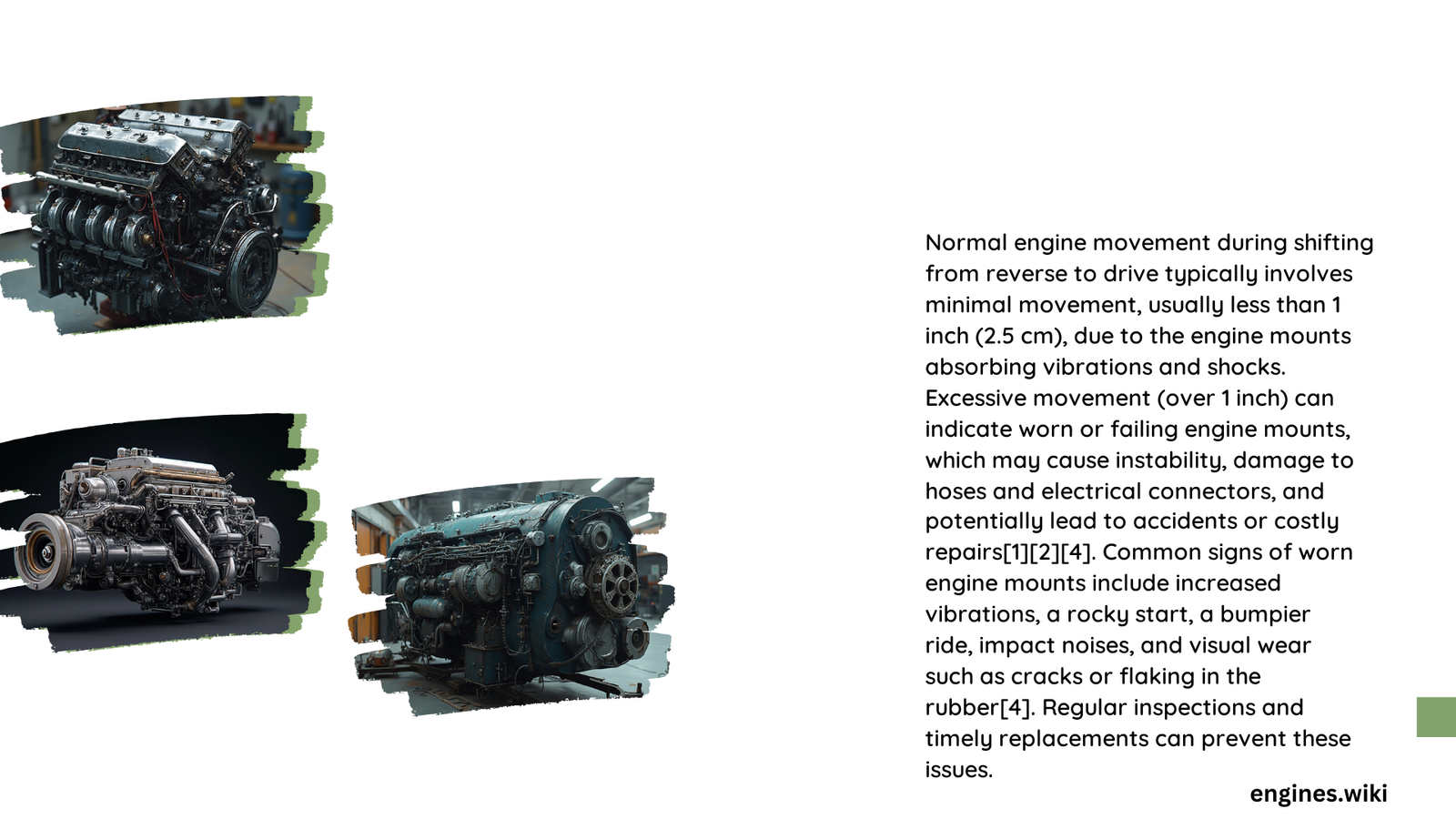Normal engine movement represents the systematic and predictable mechanical behavior of an automotive powerplant, characterized by precise rotational speeds, consistent acceleration patterns, and stable performance across various driving conditions. This complex interaction involves multiple mechanical and thermal factors that determine an engine’s operational efficiency and reliability.
What Defines Normal Engine Movement?
Normal engine movement encompasses the standard operational characteristics of an automotive engine, including consistent RPM ranges, smooth acceleration, and predictable performance metrics. Understanding these dynamics helps drivers and mechanics assess vehicle health and performance.
How Do RPM Ranges Indicate Normal Engine Performance?
Idle RPM Characteristics
Modern engines typically demonstrate idle RPM ranges between 600-1000 RPM. This range indicates:
– Stable engine operation
– Proper fuel-air mixture
– Functional idle control systems
| Vehicle Type | Typical Idle RPM | Performance Indicator |
|---|---|---|
| Sedan | 750-850 RPM | Standard Performance |
| SUV | 700-900 RPM | Moderate Performance |
| Truck | 600-800 RPM | Heavy-Duty Performance |
What Factors Influence Engine Movement?
Several critical factors impact normal engine movement:
- Temperature Conditions
- Cold temperatures increase engine friction
- High temperatures reduce mechanical efficiency
-
Optimal operating temperature: 195-220°F
-
Altitude Considerations
- Lower air density affects engine performance
- Higher altitudes require engine compensation mechanisms
- Potential RPM fluctuations of ±100 RPM
How Do Acceleration Patterns Reflect Normal Engine Movement?
Acceleration represents a crucial indicator of normal engine movement. Different vehicle types exhibit unique acceleration characteristics:
- Sedan (2.0L Naturally Aspirated)
- 0-60 mph: 8-10 seconds
- RPM Range: 1500-6000 RPM
-
Smooth, consistent power delivery
-
SUV (3.5L V6)
- 0-60 mph: 6-8 seconds
- RPM Range: 1200-5500 RPM
- Balanced performance profile
What Are Signs of Abnormal Engine Movement?
Potential indicators of compromised engine movement include:
- Inconsistent RPM fluctuations
- Unusual vibration patterns
- Unexpected power loss
- Irregular acceleration response
Maintenance Strategies for Optimal Engine Movement
Recommended maintenance techniques:
– Regular oil changes
– Consistent spark plug inspection
– Fuel system cleaning
– Periodic diagnostic assessments
Technical Insights and Performance Metrics

Advanced engine movement analysis requires understanding:
– Thermal dynamics
– Mechanical tolerances
– Fuel combustion efficiency
– Mechanical stress distribution
Conclusion
Normal engine movement represents a delicate balance of mechanical precision, thermal management, and performance optimization. By understanding these complex interactions, vehicle owners can ensure long-term reliability and peak performance.
References:
– Vehicle Performance Dynamics Study
– Automotive Engineering Journal
– Engine Movement Research Papers
